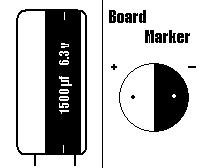Well - I just decided to upgrade the old battle axe. I have been running a P4 [email protected] in an EPoX 4BDA since March of '02(an eternity it seems like...). This setup has been dead reliable at default voltage, and while the setup was quiet, temps were excellent on all components courtesy of 5 silent 80mm fans all over my slightly modded case. She was an oldie, but never faultered once in 24/7 continuous use for 2 years.
I decided to give the old hoss some more grunt by popping in a retail SL6PC 2.4B and seeing what she could do. I figured I'd hit the limits of the chip before I really ran into a MoBo or RAM limitation, but boy was I wrong.
Basically, plugged her in, 166Mhz FSB for ~3Ghz was a bit unstable at default voltage with the lapped stock HSF(temps maxed at 52*C during P95). Bumped her down to 160Mhz for ~2.9Ghz and upped the VCore to 1.550(+0.025V) since it was dipping alot under load. The voltage regulators were getting a bit warm, but not hot. The northbridge HS was getting quite toasty, but seemed reasonable.
After about 20-25 minutes of torture testing I smelled a whiff of a smell I can only describe as "industrial byproducts" while checking the temps of various voltage regulators and clock gen chips. Upon closer inspection, I saw toasted looking marshmellow goo oozing out of 3 of the larger caps and 2 smaller ones showing signs that they were about to burst. I don't think any other component in my setup would help contribute to this, as I think I put together a solid little system back in the day. The powersupply is an Antec 400W with rock solid 12V and 5V rails, and the Lian Li case has been optimized for the most flow possible while remaining "stock" looking from most angles.
So it appears I hit the limitations in my MoBo's caps before I really got to open the chip up, or even use it...
What are my options? Is it safe to continue using this MoBo at say 2.4Ghz? That honestly leaves a bit of a sour taste in my mouth if I'm resigned to run this chip at 2.4Ghz... a level my 1.6A could hit with a decent dose of voltage(too hot for 24/7 daily grind IMO).
Should I just suck it up and get a newer mobo that won't kill the bank? I guess I'd have to get another stick of 512MB PC3200, and my current stick isn't all that hot(Corsair value PC3200). The key here for recommendations is low cost, not so much eeking out that last bit of performance.
...bah - I knew eventually I'd end up pushing a little too hard with even my tame daily-use OCs, just didn't this mild upgrade would put the nail in the coffin for my MoBo.
Sorry for the length guys, but I'd appreciate any advice you could spare. I guess I could make a spare "entertainment PC" out of my 4BDA+1.6A if I end up buying another MoBo. *sigh* guess my track time habit will have to be put on hold even longer...
I decided to give the old hoss some more grunt by popping in a retail SL6PC 2.4B and seeing what she could do. I figured I'd hit the limits of the chip before I really ran into a MoBo or RAM limitation, but boy was I wrong.
Basically, plugged her in, 166Mhz FSB for ~3Ghz was a bit unstable at default voltage with the lapped stock HSF(temps maxed at 52*C during P95). Bumped her down to 160Mhz for ~2.9Ghz and upped the VCore to 1.550(+0.025V) since it was dipping alot under load. The voltage regulators were getting a bit warm, but not hot. The northbridge HS was getting quite toasty, but seemed reasonable.
After about 20-25 minutes of torture testing I smelled a whiff of a smell I can only describe as "industrial byproducts" while checking the temps of various voltage regulators and clock gen chips. Upon closer inspection, I saw toasted looking marshmellow goo oozing out of 3 of the larger caps and 2 smaller ones showing signs that they were about to burst. I don't think any other component in my setup would help contribute to this, as I think I put together a solid little system back in the day. The powersupply is an Antec 400W with rock solid 12V and 5V rails, and the Lian Li case has been optimized for the most flow possible while remaining "stock" looking from most angles.
So it appears I hit the limitations in my MoBo's caps before I really got to open the chip up, or even use it...
What are my options? Is it safe to continue using this MoBo at say 2.4Ghz? That honestly leaves a bit of a sour taste in my mouth if I'm resigned to run this chip at 2.4Ghz... a level my 1.6A could hit with a decent dose of voltage(too hot for 24/7 daily grind IMO).
Should I just suck it up and get a newer mobo that won't kill the bank? I guess I'd have to get another stick of 512MB PC3200, and my current stick isn't all that hot(Corsair value PC3200). The key here for recommendations is low cost, not so much eeking out that last bit of performance.
...bah - I knew eventually I'd end up pushing a little too hard with even my tame daily-use OCs, just didn't this mild upgrade would put the nail in the coffin for my MoBo.
Sorry for the length guys, but I'd appreciate any advice you could spare. I guess I could make a spare "entertainment PC" out of my 4BDA+1.6A if I end up buying another MoBo. *sigh* guess my track time habit will have to be put on hold even longer...
